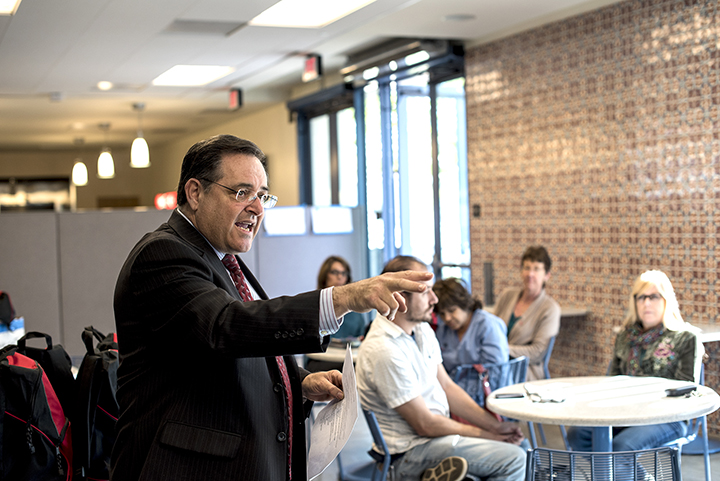The Emergency Evacuation Coordinators met inside the cafeteria of the Library / Learning Crossroads building at Pierce College on Thursday, Nov. 5 to discuss safety procedures in the event of an emergency on campus.
Proper communication methods and evacuation protocols for earthquake and active shooter scenarios were discussed during the meeting.
“There is a master plan for emergency preparedness on campus,” said Larry Kraus, associate vice president. “The use of our emergency coordinators is really a part of that plan.”
In the event of a campuswide emergency, response teams led by evacuation coordinators will facilitate the evacuation of students and faculty to designated zones on campus. The teams also assist people that may be injured.
“In each building, there are certain staff members assigned to be the ‘go to’ people,” said Clay Gediman, technology librarian for the Library / Learning Crossroads and one of the emergency evacuation coordinators. “These people are designated to come back and go through the procedures.”
According to Kraus, the first few minutes of an emergency situation can be critical in deciding which protocols to initiate.
“There’s a lot of ambiguity and there’s so many different variables,” Kraus said. “It can be completely different from one part of the campus to another part and how one building responds can be different than the next building. It’s the nature of an initial incident.”
Kraus said Pierce is testing different methods, including a text message-based system, to improve the sharing of information in the beginning moments of a campuswide emergency. Gediman said the see the planning include a library-specific emergency procedure.
“They’re moving forward with trying to get everyone coordinated,” Gediman said. “I’d like to see the direction of the planning going forward.”
Pierce President Kathleen Burke said the campus administration is continuously working with faculty and staff on planning these protocols.
“We are actively engaged in a variety of safety measures around campus,” Burke said via email. “In addition to ongoing training, we have crews from Plant Facilities surveying the campus to ensure that all of our lights are working.”
The emergency evacuation coordinators meet each month. There are plans to work with local law enforcement and the fire department to create more realistic drills to prepare the evacuation coordinators and implement the protocols within the master plan.
“We keep working down into the structure of how we communicate to everybody,” Kraus said. “We keep running exercises and keep trying to perfect it.”




